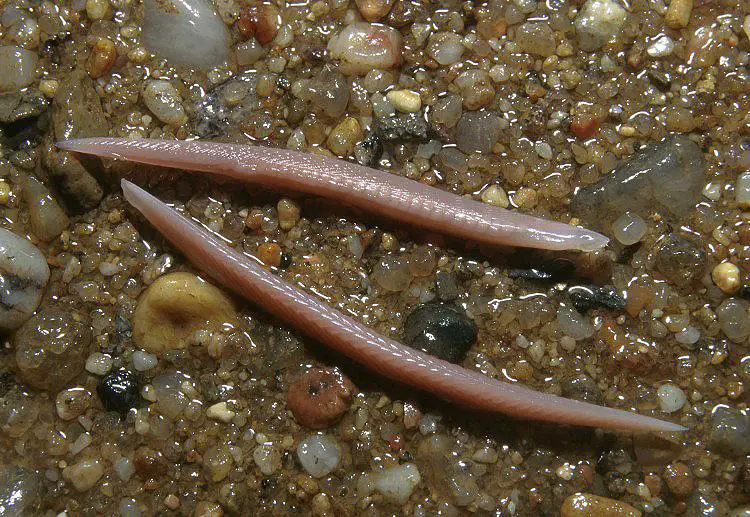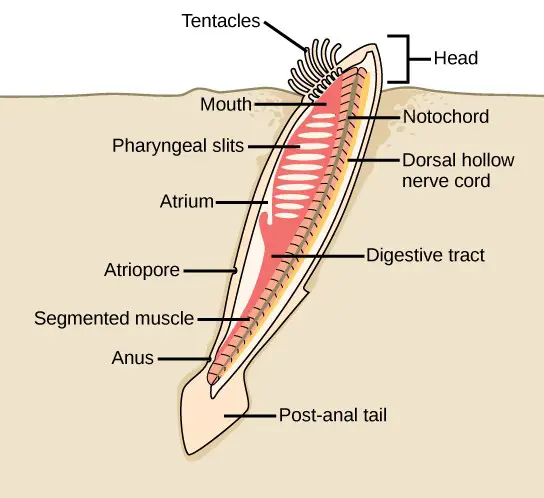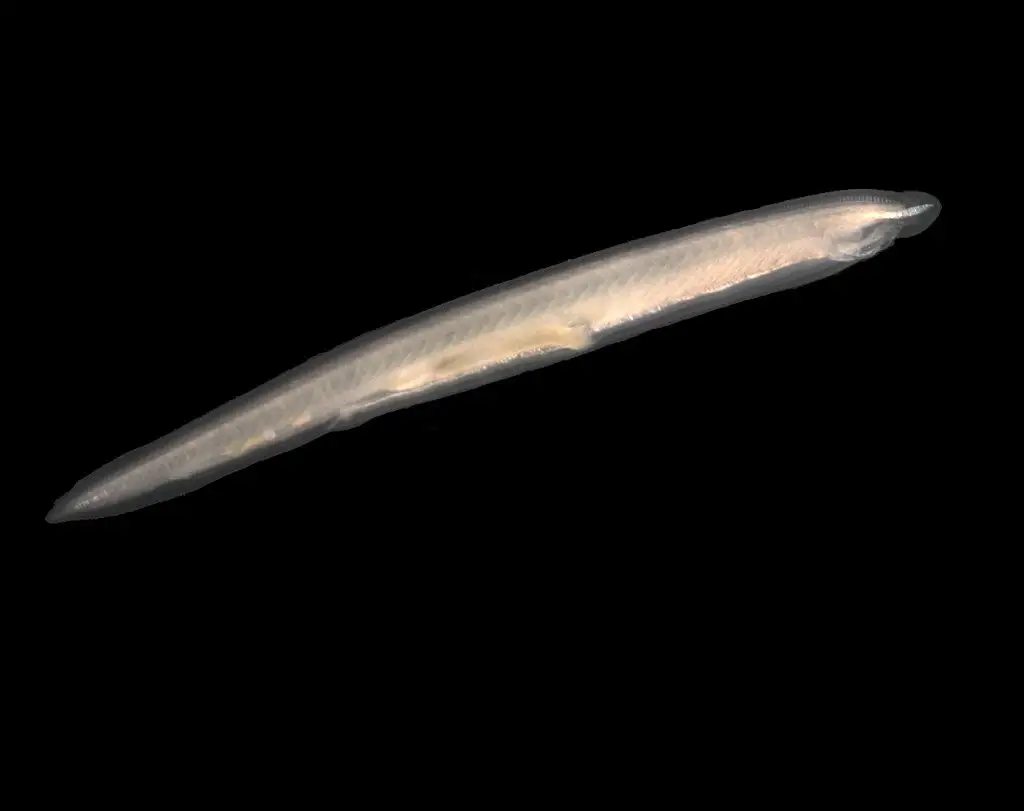Table of Contents
What is Branchiostoma(=Amphioxus):
It is a marine almost fish-like small animal under Subphylum Chephalochordata. They are considered simplified Chordata because they have all the three fundamental Chordate characters, dorsal hollow nerve cord, pharyngeal gill slits, and notochord.
In previously Branchiostoma (=Amphioxus) was placed under Mollusca but later it was placed under Subphylum Chephalochordata, which is also known as ‘lancelet’ or ‘lancet’. Branchiostoma (=Amphioxus) belongs to the family Branchiostomidae, class Leptocardii, under Group Acrania and phylum Chordata.

Cephalochordata Meaning:
In Amphioxus notochord extend throughout the length of the body, it extends up to the rostrum beyond the brain part so they are known as Chephalochordata. The word ‘kephale’ refers to the brain while the word ‘chorde’ refers to the notochord.
They do not have an ideal brain box or cranium, this leads to the name group name Acrania which means cranium absent.
Amphioxus Meaning:
‘Amphi’ word refers to two and ‘oxys’ refer to sharp, Branchiostoma is pointed at both ends so they are known as Amphioxus. Both ends taper and look like a lance so they are also known as ‘lancelet’ or ‘lancet’.
Geographical Distribution of Branchiostoma (=Amphioxus):
Branchiostoma has 6 species and is generally found in all parts of the world. But Amphioxus is generally found in large numbers in warm water oceans. The Mediterranean sea is reported for the presence of a large number of Amphioxus. It presents in abundance in China and Japan in the coastal areas and is generally used as food. In most regions, it is used as food like fish and for this reason, they have great economic importance.
Common Amphioxus species found in Indian coastal areas are Branchiostoma indicum, Branchiostoma pelagicum, Branchiostoma ceribaeum.
Habits and Habitat of Branchiostoma (=Amphioxus):
Branchiostoma is found in marine water found almost all parts of the world. They are generally found in narrow coastal waters but they can also be present in the deep ocean. In coastal areas where the depth of water is very less and salinity is much higher, Amphioxus prefer those areas. They prefer sandy coastal areas where they can embed their body in the sand and the only anterior part keep outside of the sand.

During the night they come outside the sand and swim in the water. The muscle fibers present in their body create a lateral undulation which enables them to swim actively in the coastal water. In the daytime, they hide the posterior part of the body in the vertical sand burrows. But if they are disturbed swim vertically in the sand burrows and come outside the burrows. They start to swim actively in the water, when they feel they are safe, they again enter into the sand with the head in the downward direction.
Amphioxus then make a U-turn and again push their head outside of the sand, only the posterior parts remain inside the sand in the hidden state. Amphioxus present in marine water and all the food they collect from the seawater, the oxygen required for respiration also comes from the seawater and the excretory waste materials mix into the ocean water from their body.
Amphioxus is a ciliary feeder, the microorganisms and plankton present in ocean water is used as food. The anterior part of their body creates a water current which acts as food cum respiratory water current. The microorganisms, plankton present in the ocean water enter into their body through the water current. The oxygen dissolved in the water enters into the body through the water current, the exit water current through atripore help to eliminate excretory waste materials and other unnecessary material.

In Amphioxus reproduction occur through the sexual mode of reproduction, sexual dimorphism is observed in Amphioxus, male and female are separate. Fertilization is external, the male and female Amphioxus release their gametes in the water, the fertilization takes place in the water. Development is indirect in Amphioxus, the life cycle has a free-swimming larval stage which under metamorphosis and finally forms adult Amphioxus.
Reference
Detailed Information on
Characteristics Features of Subphylum Urochordata
Classification of Subphylum Urochordata
Examples of Subphylum Urochordata: Clavellina, Salpa, and Doliolum
Hi Everyone!!! Welcome to Imaluop. Imaluop always try to learn some new and he want to share to other people. Here we will try to learn various topics on Science, specially on Biological Sciences.